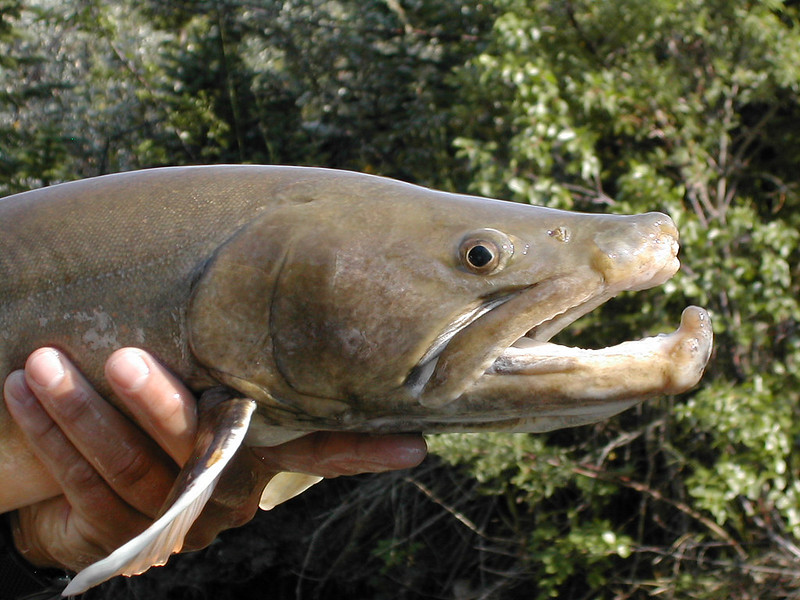
Bull trout (Salvelinus confluentus) are a rare kind of fish native to the cold mountain streams of the Pacific Northwest.
Conservation Status: Threatened
Bull trout were listed as a Threatened species under the Endangered Species Act (ESA) in 1999. In 2015 the U.S. Fish and Wildlife Service prepared a Recovery Plan and in 2020 designated Critical Habitat—steps required by the ESA. Bull Trout require the highest quality mountain streams to thrive. Their habitat requirements are known as the 4 C’s: cold, complex, clean, and connected.
Because of their habitat needs, they are seen as an indicator species of healthy mountain waterways. When their native waterways are degraded, whether from sediment pollution, channelization, damming, rising water temperatures, or other changes, bull trout suffer. In this way, losing bull trout can show declining stream quality in the mountain west, like a "canary in the creek".
Physical Characteristics: Bull trout can grow up to 41 inches long and 32 pounds; their average size is usually much smaller, with variation across their range. Fins have white leading edges, with head and mouth larger than most salmonids, hence its name. Coloring is pale yellow to crimson spots on a darker background; spawning adults develop varying amounts of red on belly. Unlike other members of the salmonid family, bull trout and other closely related species generally lack teeth on the roof of their mouths.
Diet: Juveniles feed on plankton and other aquatic invertebrates. As they mature, they eat other fish, including eggs and fry, and species like whitefish and other trout.
Habitat: Require very specific habitat components to spawn and survive. Water must generally be below 55 degrees Fahrenheit, have clean gravel beds, deep pools, complex cover such as snags, and expansive systems of interconnected waterways to facilitate spawning migrations. Favor deep pools of cold lakes/large rivers, as well as high mountain headwaters. Presence of bull trout is an excellent indicator of water quality.
Range: Found in cold, clear waters of high mountains and coastal rivers of northwestern North America. Clearwater Basin provides many crucial and ideal waters, including headwaters of primary river drainages. Virtually all of Clearwater River System and tributaries offer good habitat, including adjacent St. Joe and Salmon River Systems. Strongholds are Upper North Fork Clearwater and Upper St. Joe Rivers in the North Fork and Mallard-Larkins Roadless Areas, respectively.
Reproduction: After fourth year are ready to spawn in fall. Will return to birth river only if water temperatures are ideal – mid 40′s – with clean water/silt-free bottom. Any changes in habitat will prevent spawning. Unlike salmon, they do not die after spawning and spawn multiple times during lifetime. Eggs require 4 – 5 months to incubate; hatch in late winter or early spring. Fry remain in natal streambed up to three weeks before emerging.
Threats: Impediments to recovery include habitat degradation/fragmentation, blockage of migratory corridors, poor water quality, climate change and past fisheries management practices, including introduction of non-native species such as brown, lake, and brook trout. Mating with the latter species produces sterile offspring. Streambed erosion and siltation from logging roads are major habitat threat in Clearwater Basin; other habitat alterations from mining and off-road vehicle use may be significant in certain areas.
Miscellaneous: May be either migratory or resident. Residents spend entire lives in same stream or creek and are generally smaller, growing up to 10 inches long. Migratory fish move to large waters to over-winter and then migrate back to smaller waters to reproduce. Migratory fish grow larger, up to 35 inches long and 32 pounds.
Friends of the Clearwater
PO Box 9241
Moscow, ID 83843
(208) 882-9755